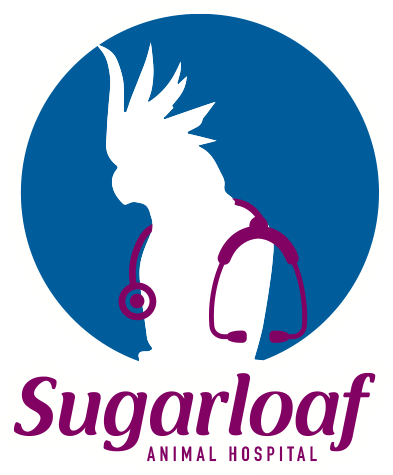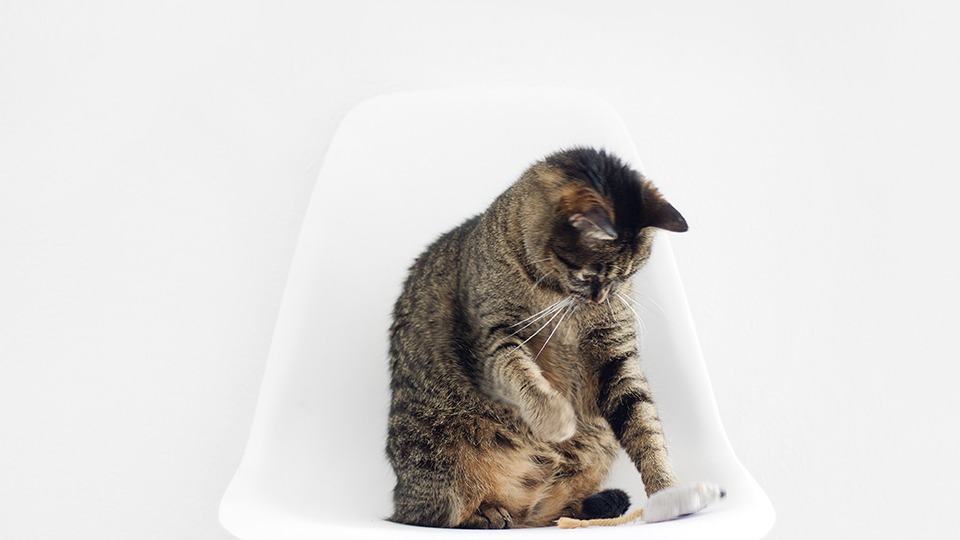At Sugarloaf Animal Hospital, we recognize that due to your cat’s uniquely feline character and quirks, a trip to the Vet can be hugely stressful for all concerned. No-one wants to take their cat to the Vet – and the cat most certainly doesn’t want to go, just like kids and the dentist!
Therefore, under the guidance of the International Society of Feline Medicine, (the veterinary division of International Cat Care) Sugarloaf Animal Hospital has qualified for the highest possible accreditation as a Veterinary Practice that cares for the specific needs of cats, with all our staff receiving training.
At SAH, we acknowledge that almost all cats feel unsafe away from their home and are overly sensitive to new surroundings and smells. So, if you have a particularly sensitive kitty and you are looking for a Veterinary Hospital to provide that little extra to keep your cat stress-free, call us at 4955 1833 or email at {enquiries@sugarloafanimalhospital.com}.
Even on a short drive from home to Sugarloaf, it is disturbing to listen to your cat vocalise its distress from the carry-cage – they are clearly very upset and know something is up. That haunting “meooowwww” they reserve for the trip to the Vet cuts right through to your bones and if translated, probably includes some profanity!
Worse still, should a cat already wound-up by the car-ride then be exposed to a barking dog in the waiting room, on top of the odours that remind him of previous unpleasant experiences, both of you will enter the consult room very discomforted. This makes our job as a Vet more challenging, as unusual behaviour can mask symptoms and hamper diagnosis.
SAH has incorporated ISFM protocols and resources aimed at reducing stress for cats, making visits to the vet more enjoyable and successful for everyone. The Gold certification holds SAH to the highest standards for surgical, dental and wellness procedures, including having the best equipment and facilities.
- We have specific times devoted to cat appointments, to lessen the chance of acrimonious interaction with dogs
- We have a completely isolated cat ward in the hospital, away from the noise and movement of the main treatment area – It is a calm space, where we can sit to observe a cat’s recovery from surgery or illness
- We take our time – I always think we have excelled at this as a Veterinary Hospital – because it allows a more complete history to be taken, and at the same time the cat has a chance to become oriented to a strange space
- We take a minimalist approach to restraint for medical procedures; we are gentle and take things in little steps; we use EMLA® (local anaesthetic skin cream) if we are giving injections; we have lots of treats wherever medically appropriate
- Our hospital cages have cardboard boxes for the cats to hide in and feel protected
- If there is a favourite rug or toy (especially if it has been gently rubbed about the cat’s face and chin) we will place it in their cage to help make them feel “at home”
- We use HEAPS of Feliway® – the calming Feline Facial Pheromone. We have used it in the consultation rooms ever since it was released, but now we have a diffuser in the cat ward. We use MUCH more in carry cages, in the consultation room, on staff jackets, on the treatment table – in fact everywhere that cats might be!
As a Gold certified Cat-Friendly clinic, all SAH staff – Vets, nurses, technicians and front office – understand the specific needs of cats as well as how to approach and handle them with sensitivity. Staff are required to maintain and update their knowledge on clinical matters and continuing professional development (CPD) as a Cat-Friendly clinic criteria.
On average, cats are going to their vet less often. A recent survey stated two-thirds of cat owners visit a vet less than once a year, citing “feline resistance.” This is paradoxical as cat ownership in Australia is increasing, with more than 3.3 million pet cats registered last year, improving (ruling?) the life of 29% of Australian families! With more understanding of feline immunity, the prudent evolution from annual to biennial (or even less) vaccination has only worsened the problem, as clients viewed vaccination as an important reason to tolerate the negatives of a veterinary visit.
Clients considering taking their cat to a vet weigh the need to go against the stress of the trip, and increasingly the perception is that the medical benefit to the cat is not worth the emotional cost. But one of the many paradoxes of cats and humans is that while we absolutely love our feline companions, we do not, on the whole, understand them!
Clients that find it difficult to measure the value of veterinary attention, particularly for wellness and health monitoring, often due to their own discomfort, place their cat at higher risk. A recent Royal Canin survey found that while more than 90% of American owners agree their cat’s health is a priority, less than half that number take their cat to the vet for regular checkups. Almost twice as many cats than dogs never visit the vet!
These trends, which have been identified in surveys here in Australia and in America, lead me to worry about how we as Veterinarians can continue to actively promote the health of our feline friends. Regular preventive checkups are essential for cats (and all pets), especially as they age and become more prone to muscle loss, diabetes, arthritis, thyroid issues and dental disease.
And lest we forget, the price tag for preventive care is often much lower than that attached to solving problems once they arise. Cats are notorious for hiding any sign of illness, meaning the problem is rarely discovered until it is quite advanced.
We have four cats in our family. They are all domestic, short-haired moggies and their personalities are as complex and wonderful as the other members of our family! So I feel a deep personal investment in advocating for the well-being of cats.
That’s why at Sugarloaf Animal Hospital, we have taken every step to ensure the entire experience is as stress-free as possible for both the cat and the owner, substantially increasing the prospects for a successful outcome.
There are also things you can do to help the process before getting to the vet. A positive relationship between you, your Vet and your cat is beneficial to its well-being. This is especially important should an overnight stay be required:
- Cat Carrier – If the only time you ever put your cat into the carrier is to take him to the vet, you will create a negative connection. Try occasionally leaving the carrier out and open to allow him to familiarize himself and not see it as a prison cell
- The Car – When the cat sees the car, he knows there’s only one destination. You can alleviate this by taking him on short trips to other places, such as the school run, or other short journeys. The more comfortable your cat is in the car, the less stressed he will be when he arrives at the Vet
- Home Comfort – If you can bring along one of your cat’s treasured possessions as a reminder of home, this will help keep it calm, both on the journey and while in the Vet’s waiting or consulting room. It is the scent, not the object, that is most important. Covering the carrier with a towel or blanket can also help induce calm
- Contact – If your cat is particularly sensitive – or you are nervous for him – feel free to contact us before you head in. As a Gold certified practice, we have everything we need to provide extra care and comfort for your cat, but it never hurts to be prepared in advance.
Of course, as I stated at the beginning, no-one wants to bring their cat to the vet, so it also makes sense to make the most of the visit:
- Nutrition – Indoor cats are more likely to become overweight, raising the risk of diabetes, heart disease and joint problems. A quick weight evaluation can assess the situation and our expert staff can suggest specific nutrition solutions
- Dental – Cats get most of the oral issues humans do, but they are much harder to detect. Professional cleaning followed-up by home care may alleviate any problems
- Parasites – even indoor cats are vulnerable to fleas, ticks, roundworms etc., which can be brought into the house in a variety of ways. Some can even be transferred to humans. As is often the case, prevention is much simpler than cure
- Behavioural issues – If your cat starts scratching furniture or “marking” its territory, these can quickly become ingrained habits. Our vets can determine whether there is a treatable medical cause, or provide tips to change anti-social rituals
- Routine examination – Just like with our own doctor, familiarity is an ally. Regular check-ups increase the chances of early diagnosis and less invasive solutions. That means less suffering for your cat – and your wallet!





